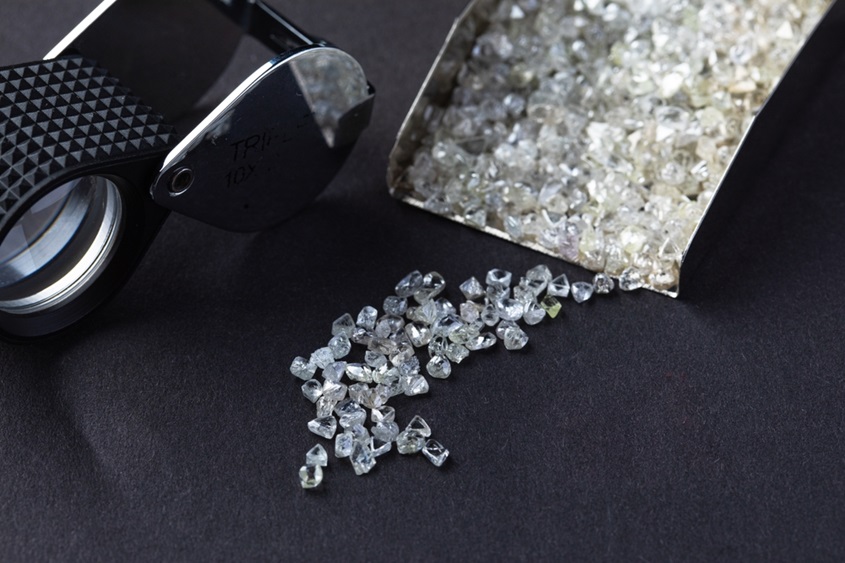
Table of Contents
The Significance of Diamond Shapes
When we talk about diamond shapes, we’re referring to the geometric outline of the stone. This isn’t just about aesthetics; the shape affects how light interacts with the diamond, influencing its brilliance and overall appeal. The right shape can accentuate a diamond’s qualities, making it appear more captivating.
A Brief History of Diamond Shapes
Diamonds have been cut into various shapes for centuries. Early diamonds were primarily cut into simple shapes, as gem-cutting techniques were not as advanced. Over time, as techniques improved, more complex shapes emerged, allowing for the dazzling variety we see today. Each shape has its own unique history and significance, making them special in different ways.
Popular Diamond Shapes
Let’s take a closer look at some of the most popular diamond shapes that are in vogue today.
Round Shape
The round shape is the most classic and popular diamond shape, accounting for about 75% of all diamonds sold. It features 58 facets that maximize light return, resulting in exceptional brilliance and sparkle. If you’re after a timeless look, the round diamond is a go-to choice.
Princess Shape
The princess shape is a modern favorite, known for its square silhouette and sharp angles. With a total of 76 facets, it provides a brilliant sparkle that rivals the round cut. This shape is perfect for those looking for a contemporary style that still feels classic.
Cushion Shape
Cushion-shaped lab diamonds have a vintage charm, resembling a soft pillow. This shape typically features rounded corners and larger facets, allowing for a beautiful play of light. The cushion cut has regained popularity, especially in vintage-inspired settings.
Emerald Shape
The emerald shape is characterized by its rectangular outline and step-cut facets. Unlike the round cut, the emerald shape emphasizes clarity rather than sparkle, making it ideal for showcasing the diamond’s purity. This elegant shape has a sophisticated vibe, perfect for those who appreciate understated luxury.
Asscher Shape
Similar to the emerald shape, the Asscher cut is square with step facets, but it often has a deeper pavilion. This unique design creates an enchanting optical illusion, drawing the eye in. The Asscher cut is favored by those looking for a vintage, art-deco feel.
Marquise Shape
The marquise shape is elongated with pointed ends, maximizing carat weight while creating the illusion of a larger diamond. This dramatic shape is perfect for making a bold statement and is often chosen for unique engagement rings.
Oval Shape
The oval shape is essentially an elongated round cut, providing the same brilliance but with a more unique silhouette. This shape is versatile and can look stunning in various settings, making it a popular choice for those who want something a bit different without straying too far from tradition.
Radiant Shape
The radiant shape combines the elegance of rectangular or square shapes with the brilliance of round cuts. This hybrid design features a trimmed corner and numerous facets, creating a unique sparkle. The radiant cut is great for those who want a modern yet timeless appearance.
Choosing the Right Shape for Your Style
When selecting a diamond shape, consider your personal style, the occasion, and the type of setting you prefer.
Personal Style
Your personal style is a major factor in determining which diamond shape suits you best. Are you drawn to classic elegance, or do you prefer modern designs? Understanding your preferences will help you narrow down your choices.
Occasion Considerations
Different shapes may be more suitable for different occasions. For example, a classic round shape is ideal for engagements, while a unique marquise shape may be perfect for an anniversary gift. Think about how the diamond will be worn and the messages you want it to convey.
Ring Setting
The diamond shape you choose can also affect how it fits into a ring setting. For instance, round diamonds are typically used in traditional solitaires, while princess and cushion cuts may look stunning in halo settings. Always consider how the shape will work with your chosen design.
Care and Maintenance of Different Shapes
Different diamond shapes may require specific care routines. For instance, the step cuts like emerald and Asscher can show dirt more easily due to their flat surfaces. Regular cleaning and gentle handling are essential for maintaining the beauty of any diamond shape.
Conclusion: The Lasting Beauty of Diamond Shapes
In the world of diamonds, the shape is not just a matter of aesthetics; it’s a reflection of personal style, sentiment, and occasion. Whether you lean towards the timeless round cut or the unique charm of a cushion shape, understanding the nuances of each shape will help you make an informed decision. After all, a diamond is not just a piece of jewelry; it’s a symbol of love, commitment, and unforgettable moments. Choose the shape that resonates with you and let your diamond shine bright!
